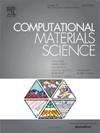Automatic deblurring and rating classification for metal corrosion images
IF 3.1
3区 材料科学
Q2 MATERIALS SCIENCE, MULTIDISCIPLINARY
引用次数: 0
Abstract
Corrosion significantly impacts materials science and poses serious risks to engineering structures, highlighting the urgent need for automated and accurate methods for assessing corrosion ratings. However, images of metal corrosion surfaces captured in real-world environments often suffer from blurriness, complicating precise evaluation. To address this challenge, we propose a novel deep learning framework that integrates adaptive deblurring with corrosion ratings classification. First, we introduce a nonlinear activation free network (NAFNet) as an adaptive deblurring algorithm specifically designed for real-world blurry images. We retrain and fine-tune NAFNet on a corrosion dataset of blurry images, enabling the model to effectively understand and correct the inherent blurriness of corrosion features. Second, we develop a corrosion classification network (CCNet) based on residual networks, incorporating efficient channel attention (ECA) to enhance the capture of critical corrosion features. Additionally, we design a joint loss function that combines traditional cross-entropy loss with center loss, thereby improving both the accuracy and robustness of corrosion ratings classification. Experimental results demonstrate that our framework effectively eliminates blur and achieves high accuracy in corrosion ratings classification. The deblurring network achieves a peak signal-to-noise ratio (PSNR) of 32.11 dB and a structural similarity index (SSIM) of 0.9763 for metal corrosion images. Furthermore, our CCNet attains a mean average precision (mAP) of 91.57% in the classification of metal corrosion images, demonstrating its high accuracy and effectiveness.

求助全文
约1分钟内获得全文
求助全文
来源期刊

Computational Materials Science
工程技术-材料科学:综合
CiteScore
6.50
自引率
6.10%
发文量
665
审稿时长
26 days
期刊介绍:
The goal of Computational Materials Science is to report on results that provide new or unique insights into, or significantly expand our understanding of, the properties of materials or phenomena associated with their design, synthesis, processing, characterization, and utilization. To be relevant to the journal, the results should be applied or applicable to specific material systems that are discussed within the submission.
 求助内容:
求助内容: 应助结果提醒方式:
应助结果提醒方式:


